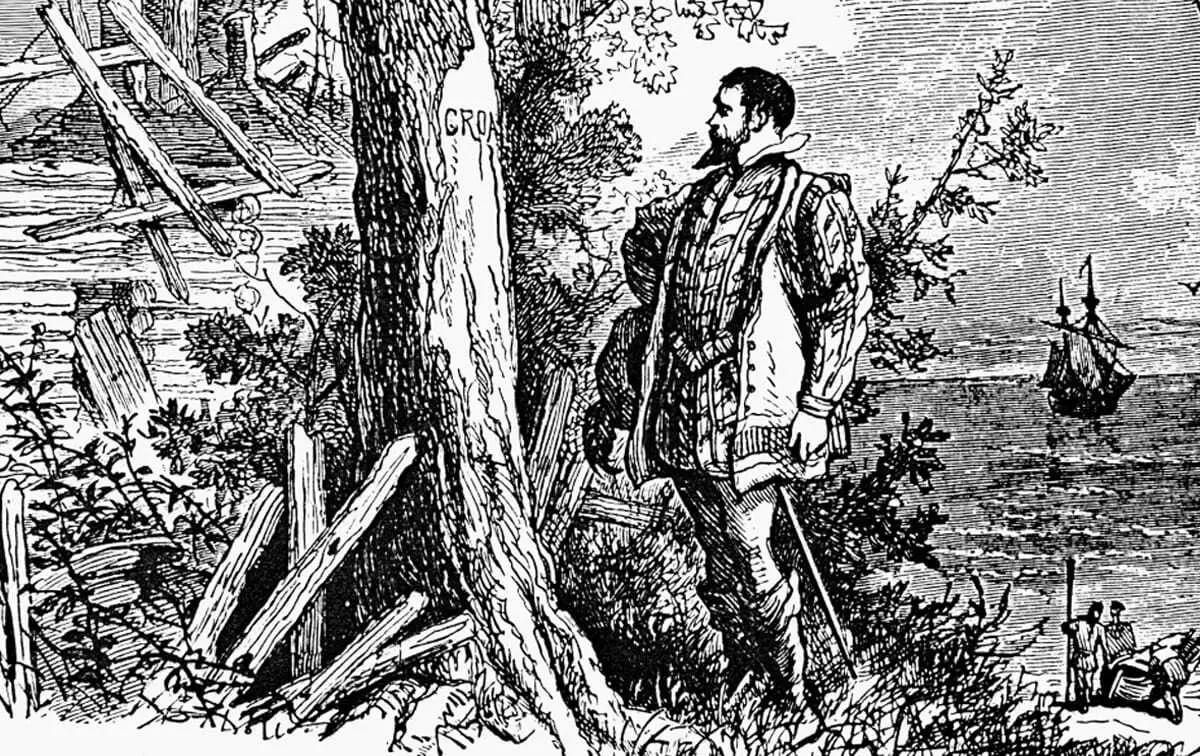The Roanoke Colony refers to two colonisation attempts by Sir Walter Raleigh to establish a permanent English settlement in North America.
The first colony was founded on Roanoke Island in North Carolina. Following the failure of the settlement, a second colony was established in 1587 on the island after Raleigh approved a corporate charter to found “the Cittie of Raleigh.” Approximately 115 people agreed to join the colony, made up of middle-class Londoners comprised of men, women, and children.
After a difficult founding year, the mayor, John White returned to England to request resources and aid. Upon his return three years later, White found that the settlement was abandoned and that his wife, children, and all the colonists had mysteriously vanished.
The word CROATOAN and the letters CRO were carved into trees within the colony’s borders and were the only signs pointing to an explanation. The Croatoans were a tribe that resided on Hatteras Island along with a Native American called Manteo who had learned English to act as an interpreter.
Some historians argue that the colonists may have travelled inland and died in the endeavor, another theory proposes that the colonists resettled on Hatteras Island.
Scott Dawson, an amateur archaeologist on Hatteras Island created the Croatoan Archaeological Society and started a project to look for the lost colonists on Hatteras. Dawson sought assistance from experts and reached out to UK archaeologist Professor Mark Horton.
Excavations first started in 2009, consisting of local volunteers and archaeologists. The project discovered various 16th-century items from England such as copper rings, sword handles, earrings, writing slates, and glass. Several women’s personal items found on Hatteras gives further argument to the Hatteras theory, as the 1587 colony was the only contemporary settlement to have English women among the colonists.
Horton told Oklahoma News 4: “When these colonies become abandoned, you get massive political eruptions and disagreements and people walking out and things. So it’s not unlikely that one group might have gone up the Chesapeake, up the Albemarle. But I’m pretty confident one group at least, probably the pretty substantial part, came out to Hatteras Island.”
Horton added: “We know that the Native American communities there were friendly. It was a good place with one’s allies in a place where you could potentially be rescued.”
The project now believes that they’ve located the “survivor’s camp” where the colonists would have first settled on Hatteras before becoming integrated with the Croatoans.
The team had planned to carry out an archaeological dig on the site this year, but the coronavirus outbreak has meant that the excavation will be delayed until 2021.
The results of the ongoing study have been compiled into a book, “The Lost Colony and Hatteras Island” which also includes details of all the Native American discoveries found by the project.





